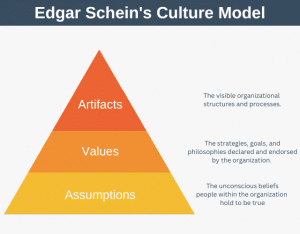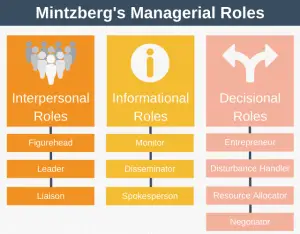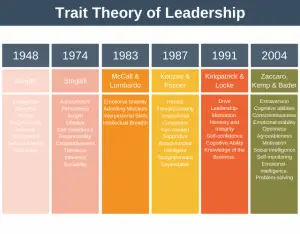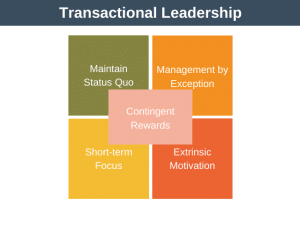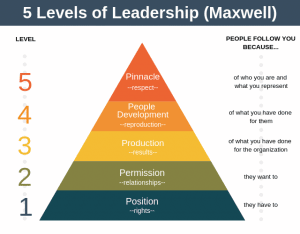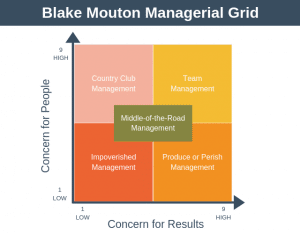The 14 Principles of Management were first introduced in 1916 by Henry Fayol. Fayol was managing director of a mining company responsible for over 1,000 employees and based his theories on his observations he made in this capacity.
In 1916, there were many large businesses and factories in existence. However, there weren’t many formal management models in existence. This meant that unlike today, managers had nowhere to turn to develop their management skills. It is for this reason that Fayol is often considered one of the founding fathers of management theory.

14 Principles of Management
From his observations at the mining company, Fayol suggested the following 14 Principles of Management. Fayol proposed that you can use these principles in all management situations, regardless of what the organization does.
Let’s examine each of the 14 Principles of Management in turn:
1. Division of Work
The division of work is also known as specialization. Specialization enables the individual to acquire expertise on the intricacies unique to a task.
This saves time. As an example, consider how much longer things would take without specialization. An employee could find themselves one day trying to program the organization’s website. On another day they could find themselves trying to collate the accounts. Thus, the familiarity that specialization brings speeds up production.
2. Authority
Managers should have the appropriate authority to give orders and instructions.
Fayol stated that you must balance authority with responsibility. For example, if a manager’s authority exceeded their responsibility, then they might misuse their authority. Likewise, if a manager doesn’t have enough authority then they will feel frustrated.
3. Discipline
For an organization to be successful everyone must pull in the same direction. To achieve this discipline must be upheld.
But discipline is a two-sided coin. Employees will obey orders only if good management is in place providing direction and leadership.
4. Unity of Command
Employees should have one and only one manager. There should be no extra lines of command which can confuse employees, and slow down decisions and production.
5. Unity of Direction
Unity of direction means that all employees performing similar activities should be under the supervision of the same manager. It also means that the manager should be operating from a single plan. This ensures teams are well coordinated as everyone is pulling in the same direction.
As an example, in a modern organization, this means that all software development activities, such as coding the organization’s website and updating internal computer system, should ultimately be under the control of a single manager.
6. Subordination of Individual Interests to the General Interest
You should not allow the interests of an individual employee to become greater than the group’s interests. This principle applies to managers as well.
You can also expand this principle to say that the goal of the group should come before an individual’s goals.
7. Remuneration
Remuneration includes financial and non-financial compensation. If an organization wants motivated and productive employees, then they will need to fairly remunerate those employees.
You can learn more about non-financial rewards in this article about Reward Power.
8. Centralization
Centralization means that decision making happens at the top of the organizational tree, with the executive board. Decentralisation is the opposite. It pushes decision making as far down the organizational chart as possible.
Fayol doesn’t state that you should have a centralized or decentralized organization. But instead, that this decision should be deliberate and appropriate to the operating needs of the organization.
This principle is also related to the principle of authority. For example, in a completely centralized organization, it’s likely that employees will lack the authority to perform their duties. But, in a completely decentralized organization managers lack authority to control employees.
9. Scalar Chain
A scalar chain is also known as a chain of command. It corresponds to the formal line of authority and communication within an organization.
Fayol states that you should structure your organization to meet the needs of the organization. For example, if you need fast decision making then a flatter organization is best. If you want to offer employees promotion opportunities then a taller organization is best. The trick is to find the right balance.
You can learn more about this in our Span of Control article.
10. Order
Order refers to keeping organized and having good plans in place so you avoid duplication of work and waste.
Order encompasses many things, including having a clean and safe environment for employees with everything in its place. It also means having resources available for use in the right place at the right time. This includes employees, capital, and other resources.
11. Equity
Managers should treat employees with equity. This means managers should treat everyone fairly at all times. This means both being consistent in your praise and consistent in your discipline. Treating employees fairly increases employee retention.
Employees have a strong sense of equity and tend to do less work if they feel they are not being treated equitably. To learn more about this concept read our article on Equity Theory.
12. Stability of Tenure of Personnel
It is important for employees to have job security. The reason for this is that a lack of job security leads to actions that don’t align with the goals of the organization.
You should also understand that it can take time for new employees to settle into their new environment and learn how to do their job well.
Managers who understand this principle strive for ever-increasing employee retention rates.
13. Initiative
You should encourage proactivity and the showing of initiative at all levels within the organization.
Encouraging employees to use their initiative should be seen as a source of strength for the organization. It also gives employees an increased sense of job satisfaction.
The push to allow employees to use their initiative needs to be balanced with the employee’s authority. The rules of equity should still apply.
14. Esprit de Corps (Team Spirit)
Management should strive to create a sense of shared goals and team spirit within their teams. This includes encouraging employees to work to the best of their abilities, as well as sharing what they have learned with others.
14 Principles of Management Advantages
The are some advantages associated with the 14 Principles of Management, including:
- When the model was first introduced, it gave managers a simple way to understand all the functions that a manager needs to perform.
- It is comprehensive in nature and can be applied to any organizational context.
14 Principles of Management Disadvantages
The are some disadvantages associated with the 14 Principles of Management, including:
- Fayol based his work on his own experiences in management and not on any empirical research.
- It is myopic and very inward-looking, not giving any consideration to customer needs. This results in organizations structured to service the needs of the organization. It would be better if the organization was structured to service the needs of the customer.
- Fayol created the model in a very different time. The command and control model doesn’t work so well with today’s knowledge workers. Today the focus needs to be on encouraging creativity, innovation, and problem-solving amongst the team.
Summary
In 1916 when Henry Fayol published the 14 Principles of Management it was one of the first times anyone described a management theory. He did it in such a general sense it could be applied to any business context.
The 14 Principles of Management still provide an excellent introduction to the demands of management. Where the 14 principles are outdated is that they are very inward-looking. This means they focus on being structured on what the business needs rather than being structured to meet the needs of the customer.

